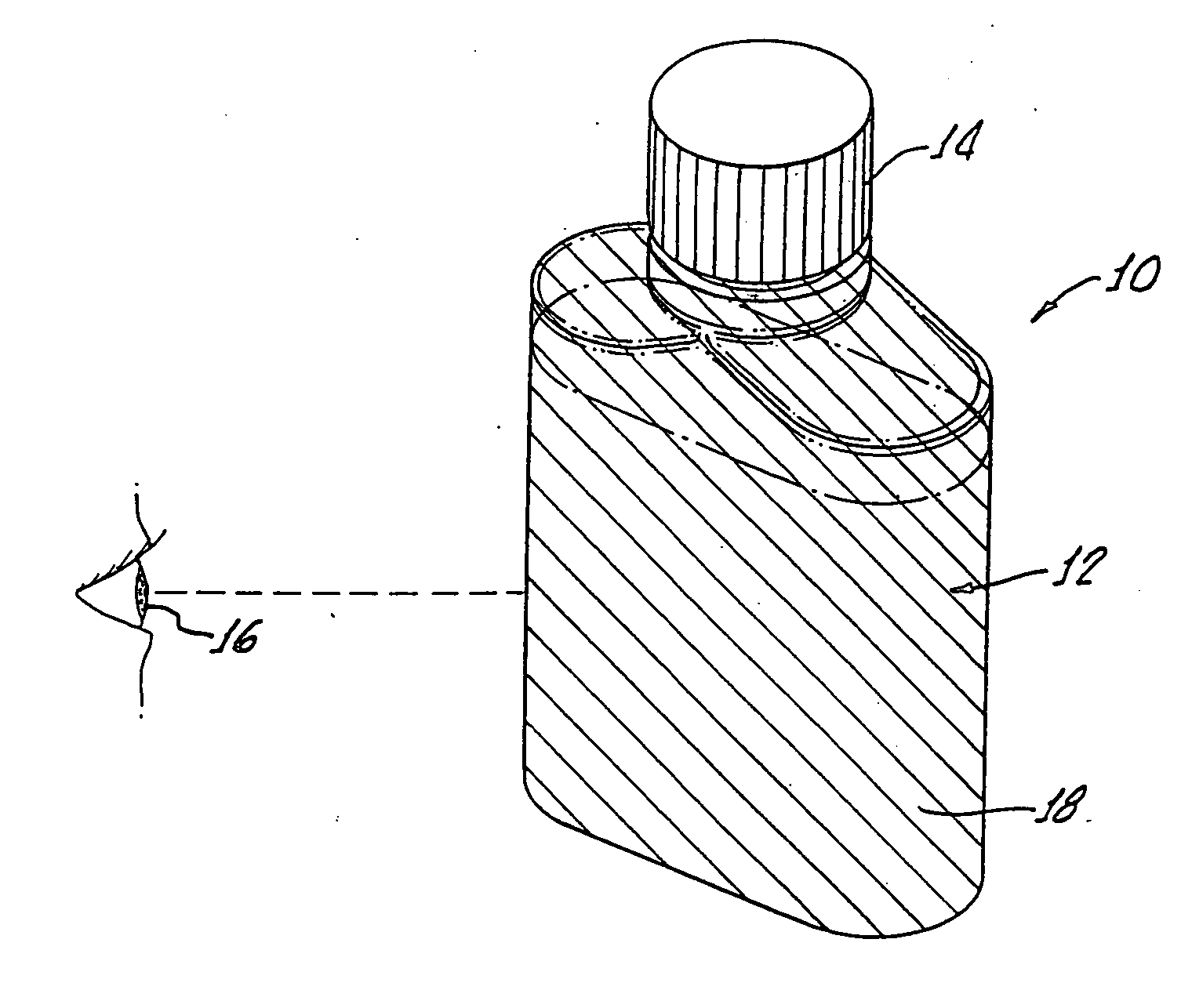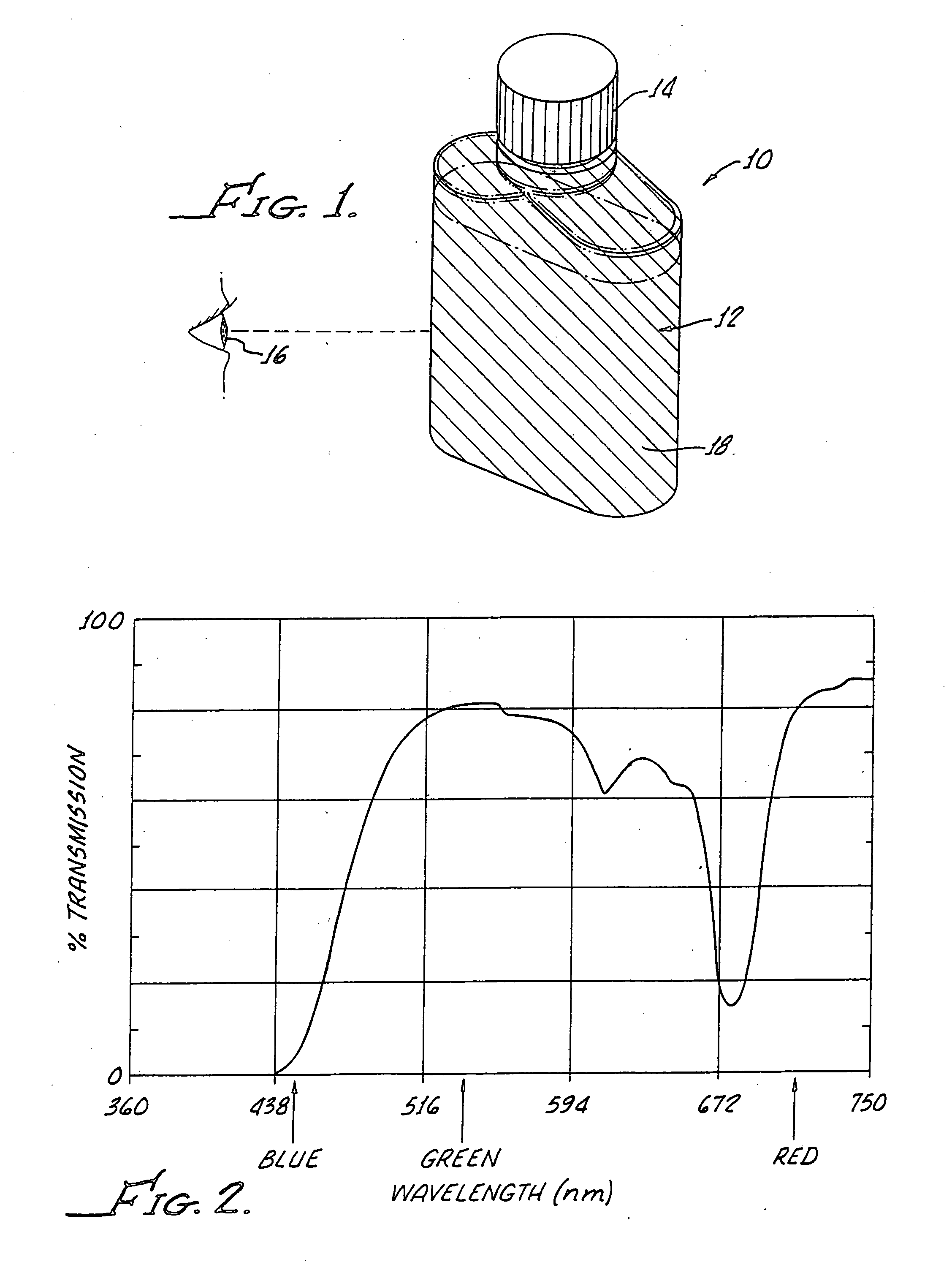Container method for product integrity and identification
a container and product technology, applied in the field of containers for liquid products, can solve the problems of inability to enable or provide the user the ability to examine the container contents for remaining volume, contamination or product degradation, etc., to prevent chlorine dioxide degradation, easy identification, and easy visual inspection
- Summary
- Abstract
- Description
- Claims
- Application Information
AI Technical Summary
Benefits of technology
Problems solved by technology
Method used
Image
Examples
Embodiment Construction
[0017] With reference to FIG. 1 there is generally shown a container 10 in accordance with the present invention for product integrity and identification. The container 10 includes a bottle 12 which is formed from a resin consisting of polyethylene terephthalate (PET). A cap 14 is provided to seal a product comprising an ophthalmic formulation including chlorine dioxide within the bottle 12. Chlorine dioxide as used in the present application includes precursors to chlorine dioxide such as, for example, Purite®. Other compounds unstable to the same light wavelengths are also considered to be within the scope of the present invention.
[0018] A resin formulated with only a yellow dye which absorbs critical wavelengths below about 400 nm also absorbs visible wavelengths of light above 500 nm, the removal of which is desired for product identification. Yellow dyes also may pass wavelengths of light (visible or ultraviolet) which degrade Purite®. It has been found that a yellow / green com...
PUM
| Property | Measurement | Unit |
|---|---|---|
| wavelengths | aaaaa | aaaaa |
| thickness | aaaaa | aaaaa |
| thickness | aaaaa | aaaaa |
Abstract
Description
Claims
Application Information
 Login to View More
Login to View More - R&D
- Intellectual Property
- Life Sciences
- Materials
- Tech Scout
- Unparalleled Data Quality
- Higher Quality Content
- 60% Fewer Hallucinations
Browse by: Latest US Patents, China's latest patents, Technical Efficacy Thesaurus, Application Domain, Technology Topic, Popular Technical Reports.
© 2025 PatSnap. All rights reserved.Legal|Privacy policy|Modern Slavery Act Transparency Statement|Sitemap|About US| Contact US: help@patsnap.com



